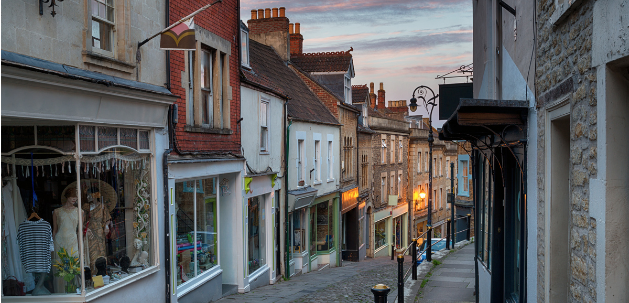Latest figures on the High Street reveals a net loss of some 1,772 shops in 2017 as more closed then new stores opened. In particular clothing and shoe shops are seeing the fastest rate of closure but some sectors including beauty salons, coffee shops, ice cream parlours and bookshops are seeing slightly increased numbers. This indicates that whilst purchases are moving online, service type retail offering experiences are prospering on the High Street.
Bookshops are a particularly interesting phenomenon, bucking the trend of a move online – The British love of a physical book hasn’t diminished. It’s less surprising that fashion is struggling on the high street as it’s one of the fastest growing categories on marketplaces and shoppers increasing buy online with retailers such as ASOS reporting sales 27% up compared to the previous six months.
“The retail industry and those connected to it have long suspected the volatility of the UK high street, and these latest findings from PwC and The Local Data Company confirm the full extent of the situation. Roughly 4,000 high street shops opened in 2017, the lowest since 2010, and this number was far outweighed by the number of shopfront closures (almost 6,000). There’s no denying shoppers are reconsidering how they spend their money and expectations are changing due to increasing competition from online retailers. As a result, pressure is mounting on independent sellers to cater to increasingly unique customer delivery needs while planning for sustainable growth. Our own research certainly shows steady growth over the same period in parcel volume (8% increase YoY from 2016-2017) supporting the idea that eCommerce will continue to grow as an important source of retail revenue.”
– Daniel Ennor, Commerical Director – GFS
Bad news for the High Street won’t necessarily be good news for online, although websales are certainly growing. A second factor is the economy and as consumers feel the pinch retail is one of the areas where discretionary spend can be reined in. Consumers will be more demanding when they do spend their money whether this be delivery choice, returns options, mobile experiences, or simply value.
With the High Street being a traditionally expensive proposition, there are no signs that the trend to close stores will slow with Maplin and Toysrus disappearing and Mothercare, Carpetright, New Look and Claire’s Accessories (at least in the US) all giving profits warnings.
You might be forgiven for being sucked into the story that the High Street is dead, never to recover. The truth is that the High Street is still evolving with retailers employing technology to assist (e.g. Zara with Artificial Intelligence). Retailers are also turning ever more to mobile (and that means the Internet) to better serve customers with new ways to buy.
For online retailers, whilst lower discretionary spend for consumers is bad news, will need to sharpen their offers both on their websites and marketplaces with value, convenience and service being their best weapons to compete against the High Street retailers, who with the large real estate inventory and staffing costs are less nimble and able to react quickly to changing consumer habits.
Article originally appeared in Tamebay





